Svensk Kärnbränslehantering AB (SKB) is Sweden’s radioactive waste management company. SKB has just submitted an application to the Radiation Safety Authority, (SSM) to extend the existing Final Repository for Short-lived Radioactive Waste (SFR) at Fosmark. Fosmark is located on the east coast of Sweden. The company has plans to expand the repository to almost three times its current size so that it can receive demolition waste from decommissioned Swedish commercial nuclear power plants.
The SKB application includes the preliminary safety analysis report (PSAR). This is a report on safety during the construction phase, system descriptions and a decommissioning plan. SKB cannot begin work to excavate rock for the extension of the SFR until SSM has approved.
Jenny Brandefelt is the project leader. She said, “The analyses are now updated with refined methods, data and calculations, while the conclusion from previous analyses remains firm: the plant is safe both during operation and after closure. It certainly feels satisfying that the updated analyses continue to show a safe facility in both the short and long-term”.
The SFR repository is situated almost two hundred feet below the bottom of the Baltic Sea. It began operations in 1988. The facility contains four five hundred- and sixty-five-foot rock vaults. It also contains a chamber cut into the bedrock with a one hundred- and sixty-five-foot concrete silo to hold the most radioactive waste. Two parallel access tunnels that are three thousand two hundred and eighty feet long provide access from the facility to the surface. The facility currently has a total final disposal capacity of about eighty-two thousand cubic yards.
Most of the short-lived waste deposited in the SFR was produced from Swedish nuclear power plants. However, radioactive waste from hospitals, veterinary medicine, research and industry are also stored in the repository.
SKB applied in December of 2014 for permission to triple the size of the repository to about twenty-three thousand five hundred cubic yards. The application was submitted to the government by the Land and Environment Court and the SSM in November of 2019. In April of 2021, the extension was approved by the municipality of Östhammar, where the repository is located. The matter was referred back to SSM and the Court following a government decision in December of 2021 to approve the extension.
SKB received an environmental permit from the Land and Environment Court for the extension in December of 2022. That permit regulates noise and transport among other things.
The plan for the extended repository will include six new rock vaults. The new vaults will be up to nine hundred feet long. The extension will be constructed at a depth of up to four hundred and sixty feet. It will be level with the current lowest part of the SFR repository.
The SFR expansion is expected to require six years to complete. In the first phase, earthworks, water treatment plants, and other infrastructure will be put in place. In the second phase, tunnelling work in the rock underground will be carried out.
Blog
-
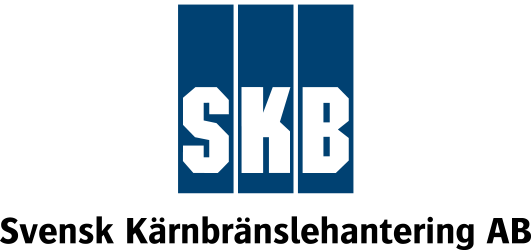
Radioactive Waste 899 – Sweden Is Expanding Its Repository for Radioactive Waste
-
Nuclear News Roundup Apr 03, 2023
Third Egyptian reactor receives construction permit world-nuclear-news.org
Lukashenko: Russia could put intercontinental missiles in Belarus if necessary reuters.com
Mochovce 3 output increased to 55% world-nuclear-news.org
China claims to support destruction of nuclear weapons, despite ramping up production foxnews.com
-
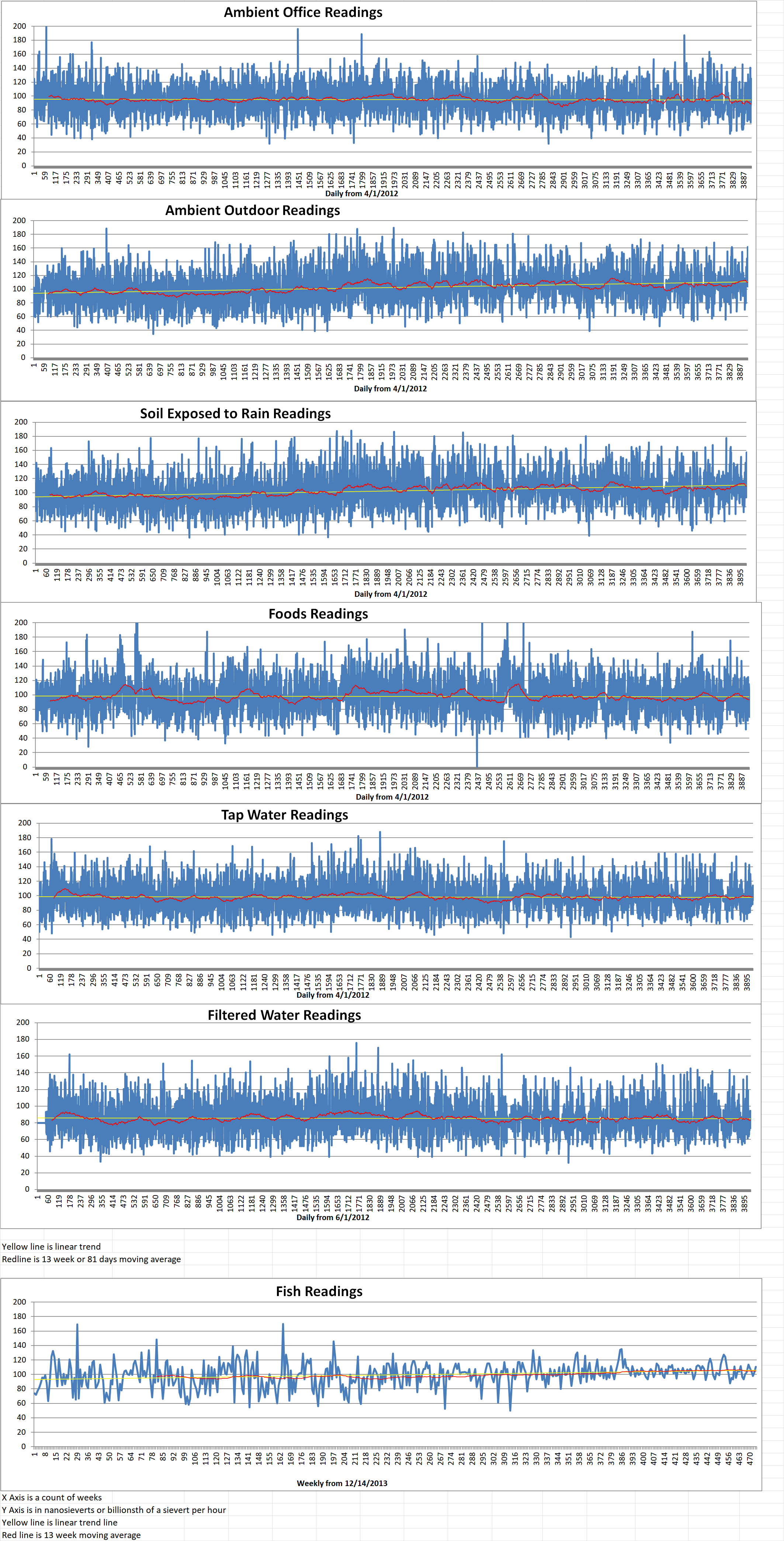
Geiger Readings for Apr 03, 2023
Ambient office = 125 nanosieverts per hour
Ambient outside = 162 nanosieverts per hour
Soil exposed to rain water = 157 nanosieverts per hour
Tomato from Central Market = 70 nanosieverts per hour
Tap water = 100 nanosieverts per hour
Filter water = 74 nanosieverts per hour
-
Nuclear News Roundup Apr 02, 2023
New isotope-producing research reactor for Missouri world-nuclear-news.org
Fortum permitted to operate Loviisa repository longer world-nuclear-news.org
Grossi focusing on ‘realistic and viable’ plan for Zaporizhzhia world-nuclear-news.org
Putin is trying to distract with fresh nuclear threat, Western officials say politico.com
-
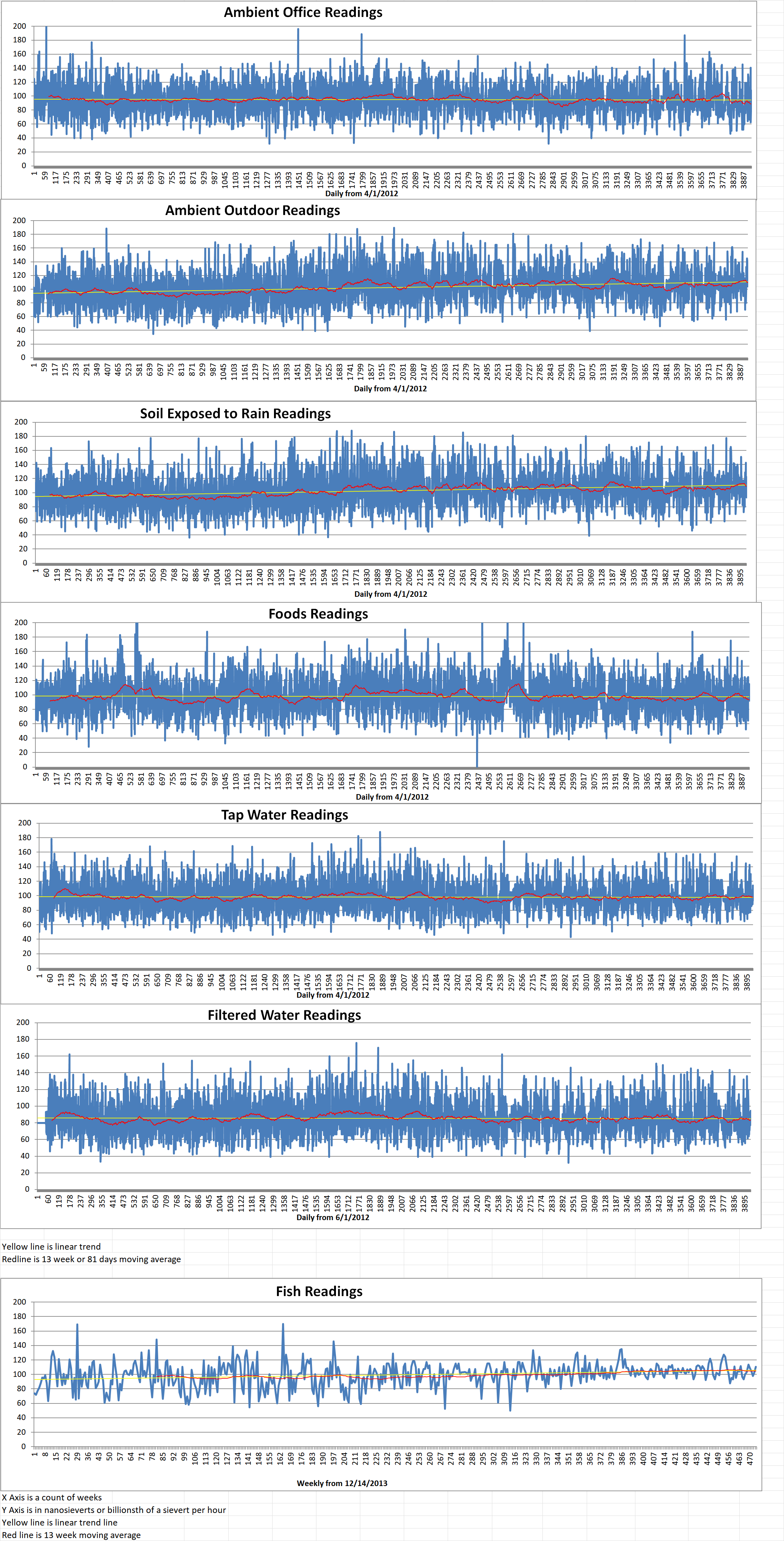
Geiger Readings for Apr 02, 2023
Ambient office = 108 nanosieverts per hour
Ambient outside = 104 nanosieverts per hour
Soil exposed to rain water = 93 nanosieverts per hour
Red bell pepper from Central Market = 92 nanosieverts per hour
Tap water = 94 nanosieverts per hour
Filter water = 84 nanosieverts per hour
-
Nuclear News Roundup Apr 01, 2023
Lukashenko echoes Kremlin’s nuclear threats against Ukraine news.yahoo.com
NATO sees no change in Russia’s nuclear posture except dangerous rhetoric Ukrinform.net
Putin’s nuclear saber-rattling is a sign of dangerous Russian desperation Atlanticcouncil.org
Opinion: Russia’s nuclear blackmail is a spectacular success for Putin cnn.com
-
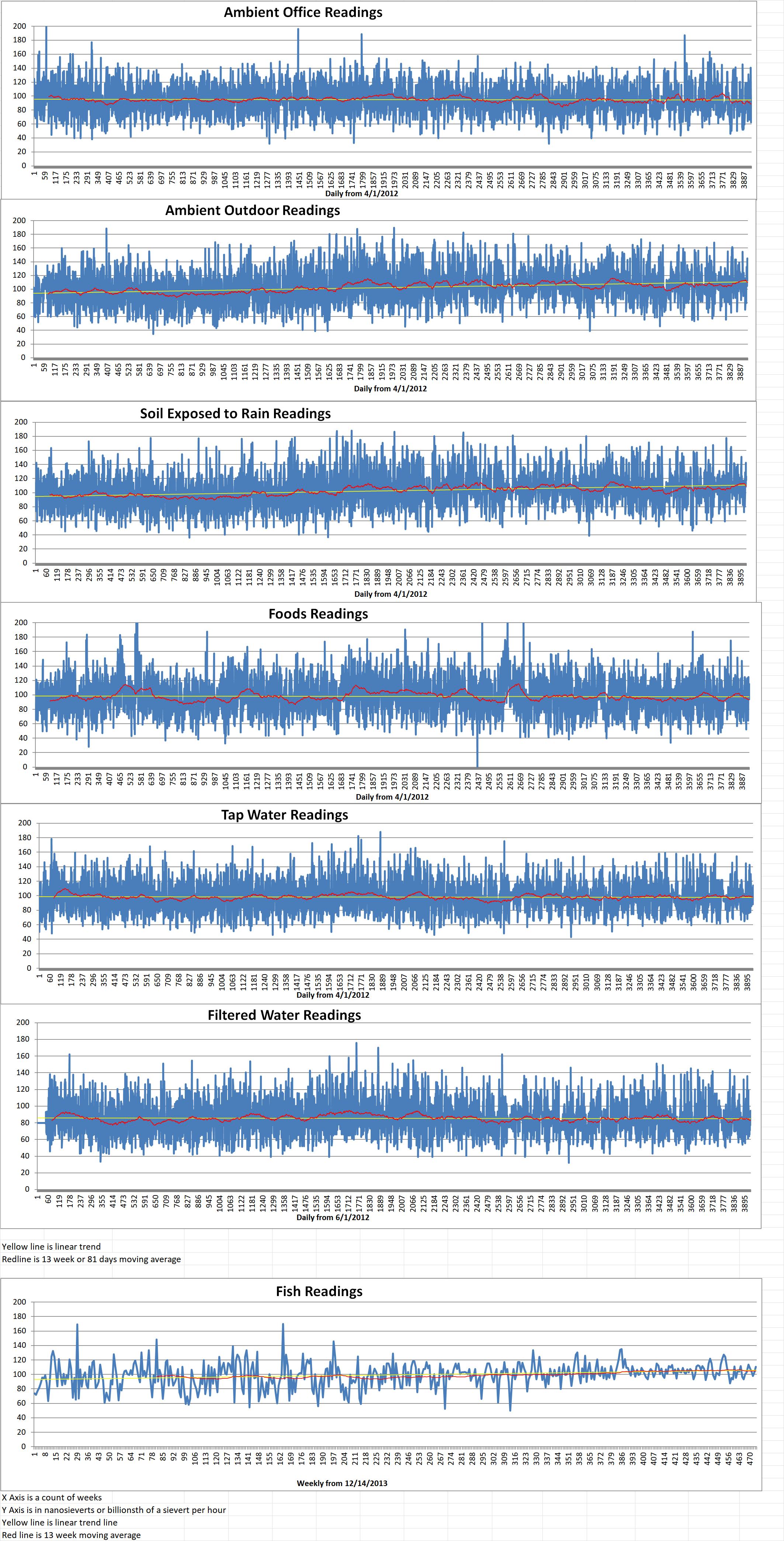
Geiger Readings for Apr 01, 2023
Ambient outside = 123 nanosieverts per hour
Soil exposed to rain water = 123 nanosieverts per hour
English cucumbers from Central Market = 104 nanosieverts per hour
Tap water = 114 nanosieverts per hour
Filter water = 95 nanosieverts per hour
Dover Sole from Central = 110 nanosieverts per hour
-
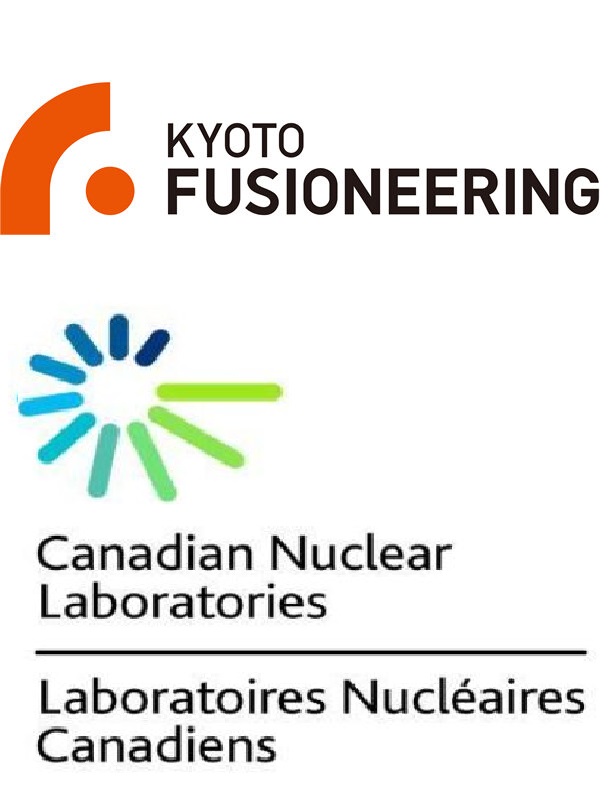
Nuclear Fusion 116 – Kyoto Fusioneering and Canadian National Laboratories Are Collaborating On Delivering Services To Fusion Research Organizations
Canadian Nuclear Laboratories (CNL) has just signed a memorandum of understanding (MoU) with Kyoto Fusioneering Ltd (KF) to collaborate on the delivery of technical services to support the growing international fusion reactor market. The collaborators will have a key focus on testing related to tritium.
Under the MoU, the CNL will work with KF to help accelerate the progression of fusion as a source of clean energy. The MoU covers cooperation in areas including the exchange of scientific information, the shared use of technical equipment and facilities, the delivery of joint research projects, and the exchange of technical personnel. The collaboration aims to provide fusion developers with better access to testing and demonstration equipment.
KF was spun out of Kyoto University in 2019 as Japan’s first fusion start-up company. Their goal is to develop advanced technologies for commercial fusion reactors building on decades of research at the university. One of the advanced technologies the company is developing for commercial fusion is tritium fuel cycle technologies and breeding blankets for tritium production and power generation.
Tritium is an isotope of hydrogen that will provide the fuel for many fusion reactor designs under development. CNL has a long and extensive history in the development of technologies and systems to safely manage tritium. It operates a dedicated, state-of-the-art Tritium Facility (TF) at its Chalk River Laboratories site in Ontario. The TF was originally constructed to support the tritium technology needs for Candu reactors and to support the Canadian fusion program. The facility is able to handle significant amounts of tritium for research and development.
Jeff Griffin is the CNL Vice-President of Science and Technology. He said, “CNL is currently exploring plans to establish an internationally unique fusion fuel cycle and demonstration loop at the Chalk River Laboratories campus. This partnership with Kyoto Fusioneering could build on this work and contribute to the setup of a demonstration-scale test loop, which would combine elements of Kyoto Fusioneering’s Unique Integrated Testing Facility (UNITY) concept with CNL’s expertise in the fusion fuel cycle.”
Taka Nagao is the CEO of KF. He said, “Kyoto Fusioneering is providing solutions for fusion energy based on innovative and unique research from Kyoto University and high quality Japanese industrial technology. The cooperation with CNL will provide a very strong and important contribution to the international development of fusion energy, which has the potential to solve key energy and environmental problems on this planet.”
Earlier this month, KF signed an agreement with the U.K. Atomic Energy Authority to develop fusion-related technologies. There are also plans to develop a fusion-grade silicon carbide composite material.
The agreement is the latest in a series of fusion-related projects recently announced by CNL. These include working with private fusion developer General Fusion on joint projects to accelerate the deployment of commercial fusion power in Canada as well as an agreement with U.K.-based First Light Fusion to design a system for extracting tritium from a planned sixty megawatt pilot power plant reactor.
Joe McBrearty is the President and CEO of CNL. He said, “Our best approach to confront climate change here in Canada and around the world is by working together, and sharing our technical knowledge and resources in the pursuit of next-generation clean energy solutions. That is at the heart of this agreement with Kyoto Fusioneering, an incredibly talented and ambitious company which shares our optimism in fusion power. Working together, we hope to accelerate this promising new technology, by providing fusion vendors with access to the products and services they need to develop, qualify and deploy their technologies.” -
Nuclear News Roundup Mar 31, 2023
U.N. pushes for Russia-Ukraine deal to protect Zaporizhzhia nuclear plant, warns of “more dangerous phase” cbsnews.com
EU agrees compromise on nuclear energy amid French pressure ft.com
Illinois Senate votes to lift nuclear power construction ban wqad.com
Government set to accelerate development of mini nuclear reactors to slash energy bills express.co.uk
-

Geiger Readings for Mar 31, 2023
Ambient office = 85 nanosieverts per hour
Ambient outside = 113 nanosieverts per hour
Soil exposed to rain water = 118 nanosieverts per hour
Blueberry from Central Market = 115 nanosieverts per hour
Tap water = 111 nanosieverts per hour
Filter water = 85 nanosieverts per hour
